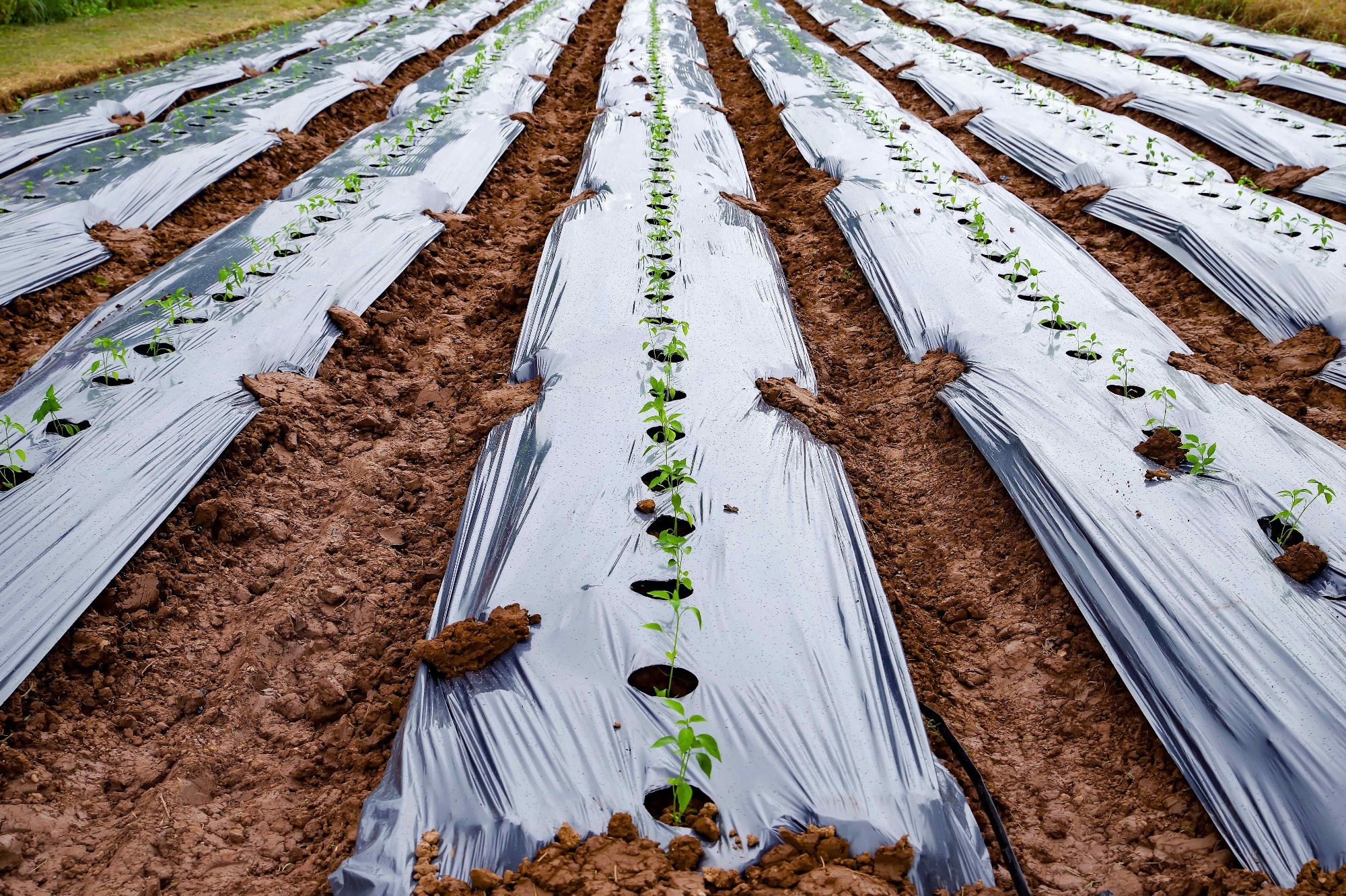Plastic pollution is a major environmental concern due to the fact it can damage natural habitats, cause harm to wildlife, and even enter the food chain, impacting food production. As plastic production is on the rise, the ubiquity of plastic stretches way beyond being solely an environmental issue; it is now also a human health concern.

Image Credit: Shutterstock.com/Attasit saentep
Despite its concerns, farmers still use plastic, in the form of mulch films, across agriculture to prevent the soil and crops from becoming contaminated by certain atmospheric factors and encourage crop development.
However, when it comes to the removal and disposal of mulch films, which are conventionally made of polyethylene (PE), some of the material may be left behind due to its predisposition to easily tear and break apart. Consequently, PE will remain in the soil and, over time, it can build up due to its inability to decompose.
Therefore, researchers are looking into alternative materials, such as biodegradable polymers, which could be broken down by microorganisms. The idea is that once broken down, biodegradable mulch film would not leave behind any traces of potentially problematic materials that could cause harm to the environment or human health.
Researchers from the Environmental Chemistry Group at ETH Zurich have recently published their findings in the journal Nature Communications regarding the development of a new method for tracking and measuring how polymer biodegrades, if at all, in soil.
Determining Polymer Biodegradation
Biodegradable polymers contain specific chemical “breaking points,” meaning that the microorganisms typically found in the soil can break down these polymers by releasing enzymes into the environment. The resulting degradation products are then consumed by the microbes and eventually respired to form the final product, CO2.
We can now systematically test for soil conditions and polymer properties that allow for complete biodegradation of the polymers to CO2 and to microbial biomass – and we can assess factors that may slow down polymer biodegradation over time.
Michael Sander, Professor in the ETH Environmental Chemistry Group, ETH Zurich
Using stable carbon isotope labeling, the ETH team was able to showcase an advanced understanding of the polymer biodegradation process in soil.
As described in the paper, the novel approach established by the researchers at ETH also leaves little room for ambiguity as they have the capacity to track biodegradable polyester – 13C polybutylene succinate (PBS) – with great selectivity. The team also determined complete closed carbon mass balances after an evaluation period of 425 days.
This showed that we can accurately determine where the polymer carbon ends up – about two-thirds in CO2 and one-third in soil – over these very long incubation periods.
Taylor Nelson, Lead Author
Reducing Plastic Pollution
Using this new approach, the group is currently investigating the biodegradation of other polymers in various agricultural soils, including in the field.
In this way, we want to ensure that biodegradable polymers live up to their name and don’t remain in the environment.
Kristopher McNeill, Professor of Environmental Chemistry, ETH Zurich
The removal of microplastics from any environment is extremely challenging. Thus, it is now more important than ever to prevent plastics from entering the environment if we are to overcome the environmental concern of soil pollution.
Replacing conventional polymers with biodegradable ones could mean a potential reduction in plastic pollution, particularly in applications where polymers are directly employed and currently have detrimental effects on agricultural conditions, wildlife, and human health.
References and Further Reading
Rüegg, P., (2022) Accurately tracking how plastic biodegrades. [online] Ethz.ch. Available at: https://ethz.ch/en/news-and-events/eth-news/news/2022/10/accurately-tracking-how-plastic-biodegrades.html
Nelson, T., Baumgartner, R., Jaggi, M., Bernasconi, S. and Battagliarin, G., et al., (2022) Biodegradation of poly(butylene succinate) in soil laboratory incubations assessed by stable carbon isotope labelling. Nature Communications, [online] 13(1). Available at: https://www.nature.com/articles/s41467-022-33064-8
Disclaimer: The views expressed here are those of the author expressed in their private capacity and do not necessarily represent the views of AZoM.com Limited T/A AZoNetwork the owner and operator of this website. This disclaimer forms part of the Terms and conditions of use of this website.